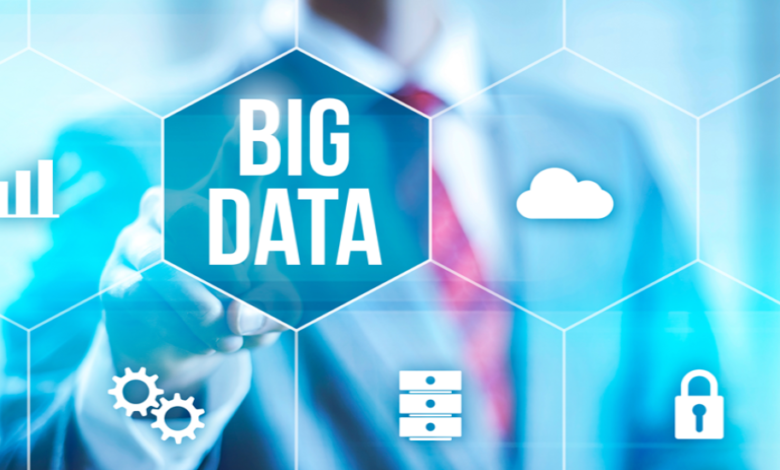Leveraging Big Data for Enhanced Cybersecurity Solutions

Cyber threats are evolving faster than ever. As technology advances, new threats from bad actors emerge practically every day. Artificial intelligence and large language models have made it easier for cybercriminals to launch more sophisticated attacks. The Blackberry Global Threat Intelligence Report for 2023 Q2 stated that their systems detected 11.5 attacks per minute over the course of 90 days. The healthcare and financial services industries were among the most targeted sectors, but organizations in all industries are susceptible to cyber attacks. In fact, According to Accenture’s Cost of Cybercrime Study, 43% of cyber attacks are aimed at small businesses. No one can afford not to have a serious cybersecurity strategy in place.
Traditional cybersecurity approaches often struggle to keep pace with the rapidly evolving threat landscape. Conventional security tools and methods, while effective to some extent, are often limited in their ability to detect and respond to sophisticated cyber threats effectively. This is where big data analytics comes into play. In the realm of cybersecurity, big data analytics holds immense potential. While bad actors can use big data to facilitate cyber attacks, organizations can use it to defend themselves against these threats and prevent them before they occur.
How to deploy big data analytics solutions for cybersecurity
Threat Detection
The 2023 IBM Security “Cost of a Data Breach” Report states that it took 203 days for an organization to detect a data breach or cyber attack in 2023. Once an attack is identified, it takes organizations an average of 70 additional days to contain the threat. Naturally, by the time the breach is detected, bad actors have had ample time to do their damage.
Leveraging data analytics and a zero-trust approach to breach detection can make a significant difference by helping you to detect threats and breaches much more quickly. Data analytics solutions can analyze patterns in user behavior and detect anomalies that may signal unauthorized access. Big data analytics can leverage both historical data and real time activity for maximum threat detection.
Threat Prediction
Data analytics gives you the power to see the future. By analyzing historical data, user behavior, activity logs, and other sources of information, data analytics can predict future attacks before they happen. By analyzing security data and identifying trends and patterns, organizations can identify areas of vulnerability, allocate resources more effectively, and prioritize security initiatives to mitigate risks and strengthen defenses.
Response
Big data can also improve the way your organization responds to attacks or attempted breaches when they do occur. By automating certain response actions, you can instantly stop a cyberattack in its tracks when your system detects that something is amiss. The ability to detect an attack and respond immediately can minimize the damage done in the event of a breach.
Forensics
Big data analytics can also assist in the aftermath of a cyberattack. By analyzing the events leading up to the breach, big data analysis can yield insights about how the attack occurred and even who may be responsible.
Benefits of utilizing big data analytics for cybersecurity
Traditional cybersecurity methods, such as manual log analysis and signature-based detection, face limitations in handling large-scale security data and detecting sophisticated cyber threats. methods may rely on periodic security assessments or manual analysis of security logs, leading to delays in threat detection and response. Big data analytics platforms can automate these processes and provide organizations with timely insights into potential security risks.
Data analytics and predictive analysis allow your organization to take a proactive approach to cybersecurity. Rather than merely reacting to security incidents as they occur, organizations can leverage predictive analytics to anticipate and prevent cyber threats before they materialize.
Big data analytics makes it possible to analyze vast quantities of data and detect potential threats much more quickly than with traditional or manual methods. This speed allows you to mitigate the damage before it escalates.
By combining historical data analysis with real-time monitoring, big data analytics can improve your organization’s abilities to detect threats, predict attacks, and respond to threats with swift action.
Challenges and considerations
To ensure big data analytics technology will be effective and ethical, your organization must address the following challenges and considerations.
- Data privacy and security concerns – Big data analytics often involve the processing and analysis of sensitive and confidential information, raising concerns about data privacy and security. Compliance with data protection regulations such as GDPR, HIPAA, and CCPA is essential to mitigate legal and regulatory risks associated with data privacy breaches.
- Ethical considerations – Likewise, organizations must ensure transparency, fairness, and accountability in their use of big data analytics, avoiding biases and discrimination in algorithmic decision-making processes. Ethical guidelines and frameworks such as the IEEE Global Initiative on Ethics of Autonomous and Intelligent Systems and the ACM Code of Ethics and Professional Conduct provide guidance for ethical behavior in the use of technology, including big data analytics.
- The need for skilled personnel – Managing big data analysis requires specialized expertise. Organizations may need to invest in training and development programs to build internal capabilities or collaborate with external partners to access the required expertise
- Avoiding audit fatigue – Data center providers that future-proof their compliance processes and go through their journey towards compliance with ISO, PCI DSS, and other standards will reduce the effort of having to go through 3rd party audits.
- Robust compliance framework – A robust compliance framework will also ensure that the organization not only becomes compliant once but can do so on an ongoing basis. This will provide additional assurance to stakeholders as they often rely on the data center provider for their compliance.
- Data integration and management complexities – Integrating and managing diverse datasets from multiple sources can be complex and challenging, requiring robust data integration and management capabilities.
- Cost and resource requirements – Organizations must allocate sufficient budget and resources for infrastructure, software licenses, personnel, and training to support big data analytics initiatives effectively.
Future trends: AI and machine learning in cybersecurity
The future of cybersecurity is increasingly intertwined with advancements in artificial intelligence (AI) and machine learning (ML) technologies. Deep learning, a subset of ML that utilizes artificial neural networks with multiple layers of abstraction, is increasingly being applied to cybersecurity tasks such as malware detection, intrusion detection, and phishing detection. Deep learning models can automatically learn intricate patterns and features from large-scale security data, leading to more accurate and effective threat detection capabilities.
Big data analytics is revolutionizing the field of cybersecurity by providing organizations with powerful tools and techniques to detect, analyze, and mitigate cyber threats more effectively. By harnessing the power of big data analytics, organizations can bolster their defenses, improve incident response capabilities, and safeguard their critical assets and data in an increasingly digital and interconnected world.
About the Author
Alexander Norell. A highly regarded and growth focused GCRS professional, Alexander Norell has more than 25 years’ experience in the IT consulting industry and 20 years in cyber, IT, privacy, and information security. As a Senior Director, Alexander has extensive experience in leadership roles for GRC security specialists. He is responsible for running the EMEA portfolio of consulting services for VikingCloud, and the delivery of all services, including risk, privacy, ISO, and PCI.
Sign up for the free insideBIGDATA newsletter.
Join us on Twitter: https://twitter.com/InsideBigData1
Join us on LinkedIn: https://www.linkedin.com/company/insidebigdata/
Join us on Facebook: https://www.facebook.com/insideBIGDATANOW



